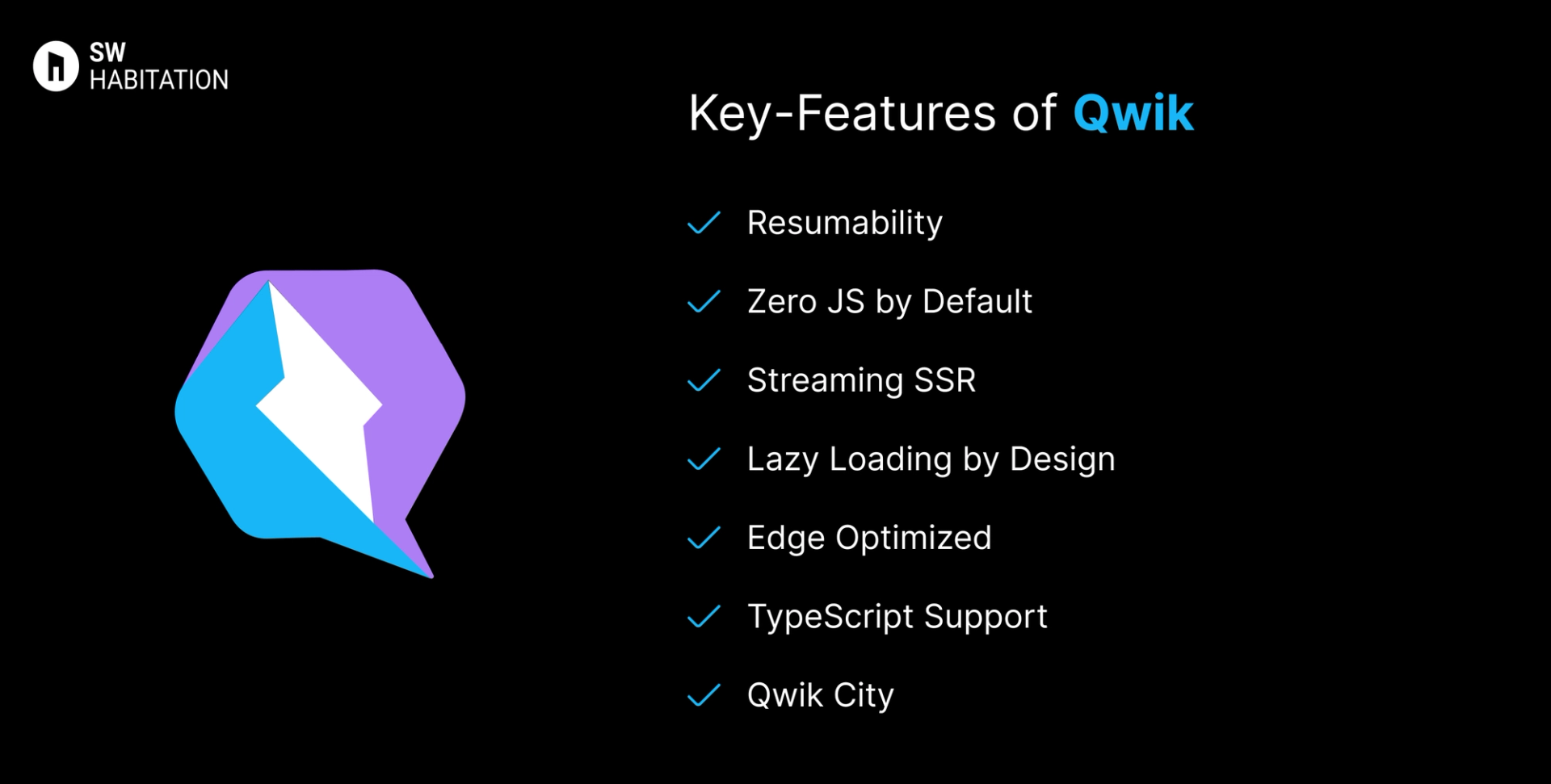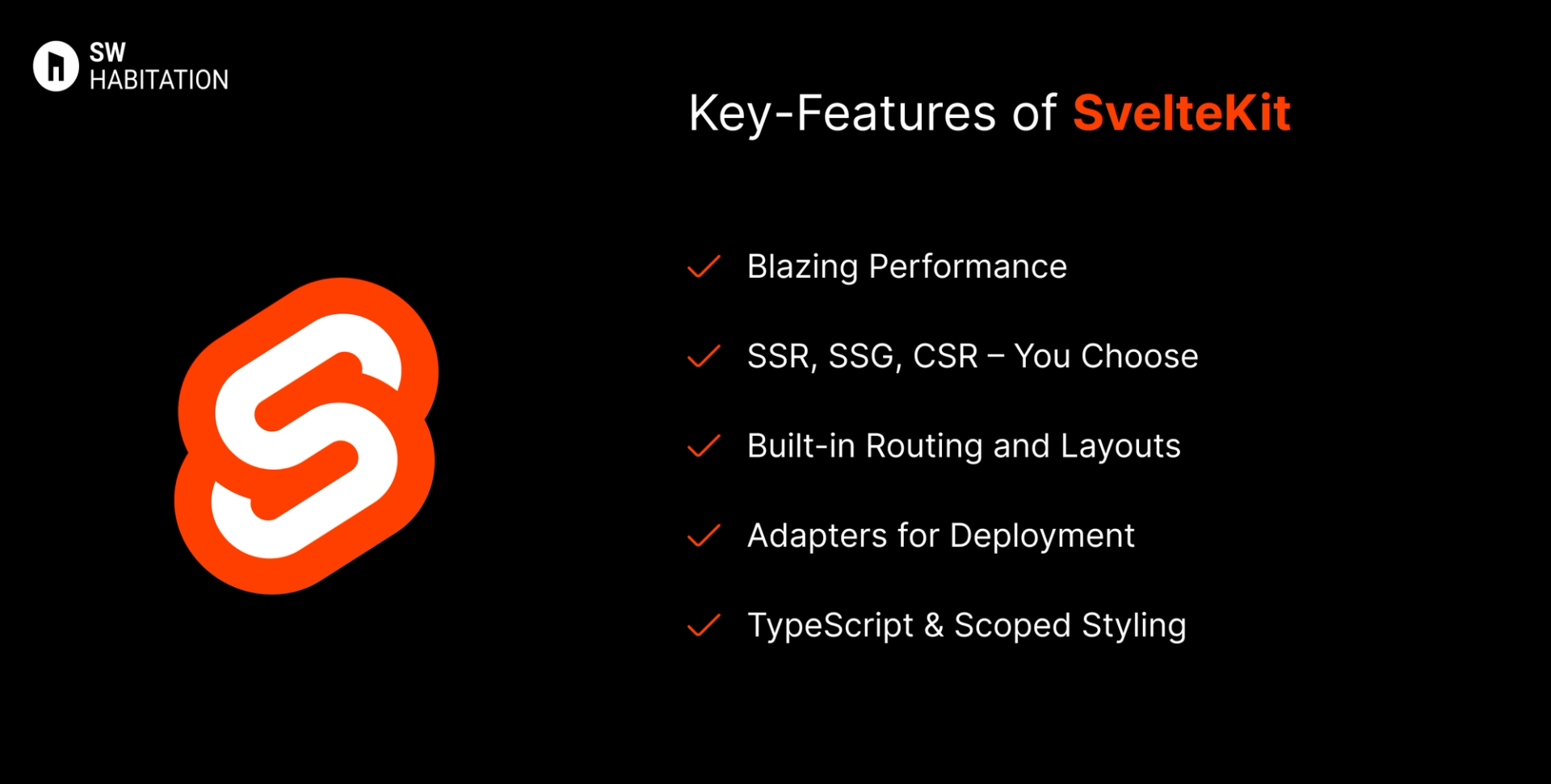Qwik vs. SvelteKit

Qwik

SvelteKit
So, you know when you want to build a website or app, but doing everything from scratch feels kinda overwhelming? That’s where web frameworks come in. They’re like a ready-made set of tools and building blocks that help you get things up and running way faster. Instead of figuring out every little piece yourself, a framework gives you a solid base to build on, and lets you focus on making something cool.
What is Qwik?
Qwik is a next-generation JavaScript framework designed for instant-loading web apps by using resumability instead of hydration. Unlike React, Vue, or Solid, which re-render components on the client, Qwik ships minimal JavaScript and resumes execution exactly where the server left off.
This makes Qwik ideal for ultra-fast, SEO-friendly apps with near-instant Time-to-Interactive (TTI), even on slow networks or devices.
Key Features of Qwik


- Resumability: No hydration,resumes app state instantly on the client.
- Zero JS by Default: Ships only the JavaScript needed for interaction.
- Streaming SSR: Server-rendered HTML streams for faster load times.
- Lazy Loading by Design: Every component is lazy-loaded automatically.
- Edge Optimized: Runs efficiently on modern edge platforms.
- TypeScript Support: Works seamlessly with TypeScript.
- Qwik City: Official meta-framework with routing, SSR, and middleware.
Advantages of Qwik
- Blazing Fast: Instant interactivity without hydration.
- Minimal JavaScript: Loads only what’s necessary.
- SEO-Friendly: Pre-rendered HTML with resumability.
- Qwik City: Built-in file-based routing and full-stack features.
- Future-Proof: Designed for edge-first and low-bandwidth devices.
Disadvantages of Qwik
- New Ecosystem: Still growing, fewer libraries compared to React/Vue.
- Learning Curve: Resumability and lazy-loading model may feel new.
- Tooling Maturity: Some integrations (like CMS/auth) need custom setup.
- Smaller Community: Not as large as React or Angular yet.
What is SvelteKit?
SvelteKit is the full-stack application framework built for the Svelte (https://svelte.dev/) UI library. Unlike traditional frameworks that run in the browser, Svelte compiles your code to highly optimized JavaScript at build time which means no virtual DOM, minimal runtime, and ultra-fast performance.
SvelteKit brings everything you need to build web apps into one unified toolchain routing, layouts, API endpoints, server-side rendering (SSR), static site generation (SSG), client-side navigation, and more — all with smart defaults and deep configurability.
Key Features of SvelteKit


- Blazing Performance: Thanks to Svelte’s compiler-based approach, apps are lean, fast, and minimal.
- SSR, SSG, CSR – You Choose: Build pages using static generation, server rendering, or client-side rendering per route.
- Built-in Routing and Layouts: File-based routing with nested layouts simplifies app structure.
- Adapters for Deployment: Deploy to any platform — Netlify, Vercel, Cloudflare Workers, Node, or static hosting.
- TypeScript & Scoped Styling: Comes with TypeScript support and CSS scoped to components.
Advantages of SvelteKit
- Minimal JavaScript: Only ships what the user needs, no heavy runtime.
- Unified Experience: Routing, layouts, endpoints, and rendering are all built-in.
- Flexible Deployment: Use adapters to deploy anywhere, from edge functions to static hosts.
- Developer Happiness: Clean syntax, fewer abstractions, and fast HMR (Hot Module Reloading).
- Excellent SEO: SSR and pre-rendering make your content crawlable by default.
Disadvantages of SvelteKit
- Smaller Ecosystem: Compared to React or Vue frameworks, it has fewer plugins/modules.
- Learning Curve for Beginners: Svelte syntax is simple, but newcomers may need time to grasp server/client boundaries in SvelteKit.
- Tooling Stability: While stable, SvelteKit is still evolving and may change more rapidly than older frameworks.
- Advanced Use Cases: Handling complex authentication, authorization, or large-scale caching may need custom solutions.
Comparison Between Qwik vs SvelteKit
Use Cases of Qwik
- Landing Pages: Instant-loading, SEO-friendly marketing sites.
- E-commerce: Fast product pages with lazy-loaded interactivity.
- Dashboards: Data-heavy apps that benefit from resumability.
- PWAs: Progressive Web Apps with instant interactivity.
- Edge-Native Apps: Apps deployed on edge networks like Vercel or Netlify.
Use Cases of SvelteKit
- Technical Blogs & Portfolios
- Dashboards & SaaS Platforms
- Marketing Websites
- E-commerce Sites
- APIs & Endpoints
Other Resources
Conclusion
Web frameworks make building websites and apps a whole lot easier. Whether you’re working on a personal project or something big for work, they help with the heavy lifting—like routing, design structure, and how everything connects.
With support for things like server-side rendering, optimized performance, and developer-friendly features, these tools let you create faster, smarter, and cleaner websites. Just pick the one that fits your style, and start building something awesome 🚀
Frequently asked questions
Is Qwik better than React?
Faster in load time and interactivity, but React has a larger ecosystem.
Does Qwik use JSX?
Yes, Qwik uses JSX/TSX syntax.
Can I use Qwik with TypeScript?
Yes, it has built-in TypeScript support.
Is Qwik production-ready?
Yes, it’s stable and used in production, but still growing.
What is Qwik City?
The official meta-framework for routing, SSR, and middleware.
When should I use Qwik?
When you need ultra-fast, SEO-optimized apps with instant interactivity.
Is SvelteKit production-ready?
Yes. SvelteKit reached 1.0 stable in late 2022 and is now considered production-ready. Many companies are already using it for production apps.
Can I migrate my existing Svelte app to SvelteKit?
Yes. You can move your Svelte components into a SvelteKit project and then set up routing, data loading, and server logic. The migration is straightforward but may require some restructuring.
Does SvelteKit support TypeScript?
Yes. TypeScript support is built-in. You can enable it when creating your project with npm create svelte@latest.
Which rendering modes does SvelteKit support?
SvelteKit supports SSR (Server-Side Rendering), SSG (Static Site Generation), CSR (Client-Side Rendering), and even hybrid setups in a single app.
